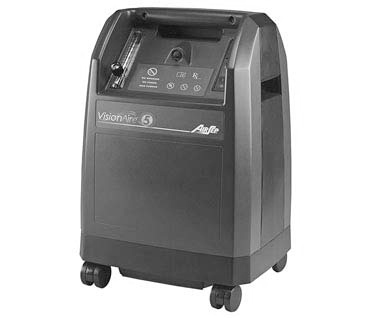Oxygen Concentrators
An oxygen concentrator receives air, purifies it, and then distributes the newly formed air. Before it goes into the concentrator, air is made up of 80 percent nitrogen and 20 percent oxygen. After the air goes through the oxygen concentrator, it comes out as 90 to 95 percent pure oxygen and 5 to 10 percent nitrogen. The nitrogen is separated to give the patient the highest dose of oxygen possible, as it is difficult to get that percentage of oxygen without the help of a medical device.
The 5 Step Concentrator Process
- Takes air from the room
- Compresses the oxygen
- Takes out nitrogen from the air
- Adjusts the way the air is delivered
- Delivers the purified air.
How An Oxygen Concentrator Works
Atmospheric air consists of 21% oxygen, 78% nitrogen, 1% inert gases.
A concentrator draws in atmospheric air, then by a physical process (not a chemical reaction) separates the nitrogen, which is then purged back into the atmosphere.
A high concentration of oxygen (95%) is then delivered to the client via oxygen delivery tube and nasal cannula or mask (over 3.5 lpm for mask).
Rebates and Government Assistance
Individuals in their own homes can claim a rebate to offset the electricity costs of running the machine. Further Information on NSW and Vic rebates can be found here, or via contacting Albury Vital Air

